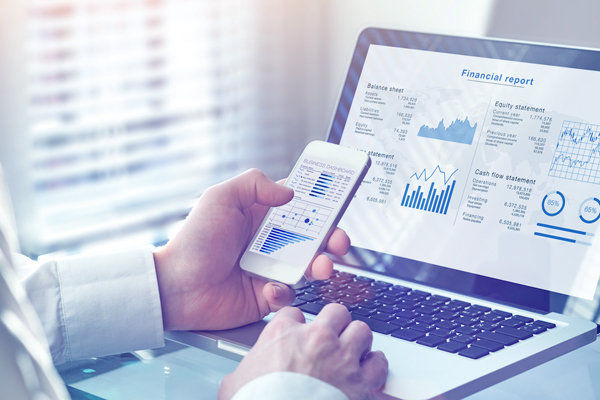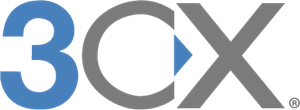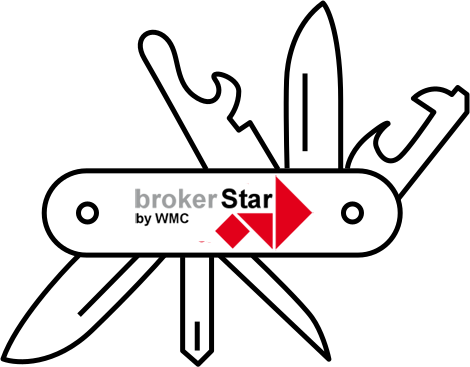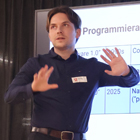Reporting in BrokerStar
The term reporting covers all types of analyses, whether as a list or a graphic and regardless of the format.
In the following article, we explain how the reporting system in BrokerStar is structured. We look at technical and licence-related aspects and show you the various options.
1. the BrokerStar reporting system
2. standard, individual and ad hoc reports
3. file formats
4. services

1. the BrokerStar reporting system
Reports from BrokerStar can be output in all available file formats. The most important of these include PDF/A (legally archivable, unalterable PDF), Excel, Word, PowerPoint or HTML. The standard reports are usually output as PDFs. However, there are also generic Excel exports for further processing. For output as Word, there is the option of automatically converting the PDF into a Word file.
4. services
Included in the subscription:
- All standard reports
Additional services subject to a charge
- Customised adaptations to standard reports -> Individual reports
- Individual reports. Dashboards, cockpits, Ad Hoc Reports
- Training
Licences
- All reports from level 2 require the licensing of the MIS module
Jaspersoft
Analysis with BI
Five Levels
Data security, data protection (nDSG)
Data security and data protection are playing an increasingly important role. A cyber attack or data breach usually has serious consequences.
It is therefore more important than ever to protect, back up and store data securely. On 1 September 2023 the new Swiss Data Protection Act (nDSG) came into force, which also resulted in adjustments to data storage. BrokerStar and BrokerWeb are prepared for this.

Data security deals with the general protection of data and documents. Thus, security in any form falls under the term data security, as does personal data. The Data protection on the other hand, relates exclusively to the storage and use of personal data, at least as far as the legal provisions are concerned.
Data security and data protection therefore pursue the goal of securing data of all kinds against threats, manipulation, unauthorised access or knowledge. Analogue and digital measures can be taken to achieve this. First of all, there are technical and organisational measures, which are also used in the context of data protection.
In the digital sector, the implementation of IT security solutions in the form of virus scanners, firewalls etc. contributes to the security of data. Physical measures, on the other hand, include access controls, fireproof filing cabinets or safes for sensitive and confidential documents. Data backups, such as the creation of backup copies on a separate storage medium, are also essential. A solid network infrastructure and regular updates are the basic prerequisites for achieving data security goals. Data protection, on the other hand, is essentially about how personal data is used and stored.
It is therefore important to take organisational and personnel policy precautions to ensure a high standard of security within the company. Employee training and further education, as well as the deployment of specialists such as IT security officers and data protection officers, contribute to data security and are sometimes mandatory for compliance reasons. IT security and data protection officers are dedicated to analysing potential security gaps in your company and creating appropriate measures to achieve the data security objective.
The terms are therefore not only closely linked, but also influence each other. For example, complete data security cannot be achieved without data protection measures, as otherwise personal data may not be adequately protected. On the other hand, comprehensive data security measures are a prerequisite for effective data protection in accordance with legal requirements and best practice.
The following aspects of the new Data Protection Act are important:
- Keep track of exactly what data is being processed and for what purpose. You can provide information about this at any time and avoid unpleasant surprises.
- Critically review the collection of personal data. What is effectively necessary for you?
- Reduce the query criteria for your customers to a minimum.
- Restrict internal data access in the company to as few people as possible.
- Check your privacy policy in detail and amend it if necessary.
- Check and improve the technical default settings and user-friendliness.
- Train your employees to sensitise them to the importance of the topic.
Details on the new data protection law can be found here and on the official site of the federal government
Sources, Profi Engineering, 2021, SME digitalisation 2022, Data protection partner 2022, www.admin.ch
Templates and documents (Sources: SIBA, IG B2B, WMC)
Data processing
Portal utilisation
Secure Mail
IG B2B nDSG
3CX Firstclass telephony at an SME price
The complete telephony solution
Do you need a new telephone system? WMC offers the entire solution from a single source. In addition to convenience and great reliability, you benefit from significantly reduced telephone costs. Cooperation with sipcall and WMC have been working together for around 20 years. As an experienced partner of 3CX, WMC is the point of contact for all topics relating to the virtual telephone system (PBX).

The three components of the solution
1. voice over IP (VoIP)
Since 2019, telephony in Switzerland has always run via the internet. New methods recognise whether calls or data are involved. In most cases, all communication is transmitted via the same connection.
2. computer integrated telephony
Just as computer data can contain a link to a website or an e‑mail address, direct links to a telephone number are also available. Clicking on them creates a connection directly to the VoIP-based telephone network or via a telephone system. This can be located anywhere on the Internet.
3. the CTI software solution
WMC programmes such as BrokerStar or iOffice have integrated telephony. The only link required is a compatible telephone system. Connection to a 3CX is available as standard. This connection option is also recommended for Teams telephony. Interfaces to other systems can be created if required.
Service included.
- Recording the customer’s requirements.
- Preparation of an overall proposal
- Cancellation of previous provider
- Conclusion of subscription provider
- Porting of telephone numbers
- Licensing 3CX
- Set up hosting
- Delivery of telephones and headsets *
- Changeover on the key date without interruption
- Professional telephone announcements *
- Favourable Internet connection * *optional on request

Making calls with BrokerStar / iOffice
The complete solution
In addition to the WMC software, as a customer you need a telephone connection and a 3CX telephone system. This can be provided by you or by a telephone provider. WMC offers the entire solution from a single source. In addition to the convenience and great reliability, you benefit from significantly reduced telephone costs. The co-operation with sipcall and WMC have been in existence for around 20 years.
Calling with BrokerStar and iOffice is now available.
Not only does dialling a telephone number in the programme automatically create the connection. For incoming calls, the system also recognises a saved number and automatically opens the corresponding customer window. The solution currently works exclusively with the popular 3CX telephone system. The low costs make this useful option a highlight.
The three components of the solution

1. voice over IP (VoIP)
Since 2019, telephony in Switzerland has been made exclusively via the internet. New methods recognise whether calls or data are involved. In most cases, all communication is transmitted via the same connection.
2. computer integrated telephony
Just as computer data can contain a link to a website or an e‑mail address, direct links to a telephone number are also available. Clicking on them creates a connection directly to the VoIP-based telephone network or via a telephone system. This can be located anywhere on the Internet.
3. the CTI software solution
WMC programmes such as BrokerStar or iOffice have integrated telephony. The only link required is a compatible telephone system. Connection to a 3CX is available as standard. This connection option is also recommended for Teams telephony. Interfaces to other systems can be created if required.
What does digitalisation actually mean
Digitalisation is the generic term for the digital transformation of society and the economy. It describes the transition from the 20th century, which was characterised by analogue technologies, to the age of knowledge and creativity, which is shaped by digital technologies and digital innovations.
Digitalisation is the most important social and economic development of our time. But what do terms like: Digital change, digital transformation, digital disruption?

What digital skills will we need in the future? What are digital business models?
Companies and organisations are making progress with digital transformation at different speeds. While some limit themselves to digitalising existing business processes, others proactively develop digital concepts and business models. The decisive factor for success in digitalisation is the so-called „digital maturity level“. This is a scientifically based 360-degree instrument that is used to analyse all the factors that are important for change.
Digitisation explained simply
Over the past 20 years or so, various digital technologies (mobile internet, artificial intelligence, internet of things, etc.) have been drastically developed and have made the leap from expert applications to everyday life. Just as the innovation of the steam engine has changed society, so too has the digital transformation.
Digitalisation is driven by technology. Digital innovations are created on the basis of the digital technologies developed: New use cases driven by existing companies and start-ups with venture capital. This leads to different speeds. While public administration, for example, often only accepts paper documents and works with files, markets are changing much faster. All sectors are now affected by digitalisation. Digitalisation is also influencing the future of the finance and insurance industry. New forms are only possible thanks to digitalisation technologies, which will continue to spread in the future.
Digitalisation is changing the future of traditional professions. In future, doctors will be increasingly supported by e‑health applications, especially in diagnostics. Legal services (currently primarily provided by lawyers) will be supplemented or replaced by digital services from the legal tech sector. And the term Insuretech has already been established.
In the future, digitalisation will make new demands on schools, education and training in all areas. It is the task of business, associations and politics to prepare society for the coming changes.
Digitalisation and companies
Digitalisation has an impact on companies of all sizes. On the one hand, companies are using digital technologies to digitalise their business processes, i.e. for process optimisation and process innovation. This is also being driven by digital transformation and in some cases realised by start-ups. The challenge for companies in digitalisation is to identify new customer needs that arise due to the growing spread of digital services and apps.
The so-called „digital natives“ have also created new target groups. Companies often need different marketing and sales strategies to increase their customer focus on these target groups. Action must be adapted in order to be successful in the digital transformation Companies must address the question: How do we want to reach customers tomorrow? What role do new trends play? How do we deal with the increasingly individualised needs of our customers?
Development of digital workflows and processes: Saying goodbye to paper files by introducing processes and workflows in the company, some of which need to be radically rethought as a result of digitalisation, such as the handling of data that is generated within the company, in connection with a company’s activities and by customers. Data can be used to develop new services and business models. Digitalisation presents us all with the challenge of permanently changing and adapting. Competitive advantages from the past only exist to a limited extent. To achieve this, companies need to drive digital transformation within the organisation and increase their digital readiness.
Secure login
Multi-factor authentication is a security procedure in which a user provides two different features to identify themselves. One of the features is usually a physical token, such as a security code or an SMS.
People like to talk about something that „you have“ and something that „you know”. A typical example of two-factor authentication is a QR code, while the PIN (personal identification number) forms the associated information. The combination of the two makes it more difficult for a stranger to access the user’s data.

Multi-factor authentication for more secure connections
Multi-factor authentication corresponds to two-factor authentication, whereby different tokens can be used. This allows the user to choose which method suits them best. Modern security processes often consist of a password and biometric data such as a fingerprint or voice recognition.
An attacker may succeed in cracking a single authentication factor, for example. For example, a thorough search of the victim’s environment can lead to the discovery of an employee ID card or a user ID with the corresponding password that has ended up in the rubbish. Or a carelessly discarded hard drive may contain a password database. However, if other factors are required for authentication, the attacker faces at least one more hurdle to overcome.
The majority of today’s attacks are carried out via internet connections. Multi-factor authentication can make these remote attacks far less dangerous because simply cracking the password is no longer enough to gain access. This is because it is very unlikely that the attacker will also gain possession of the physical device or code linked to the user account. Each additional authentication factor therefore makes a system more secure. This is because the individual factors are independent of each other. If one of the factors is compromised, this does not affect the others.
BrokerStar and iOffice by WMC use multi-factor authentication from version 2.4.











